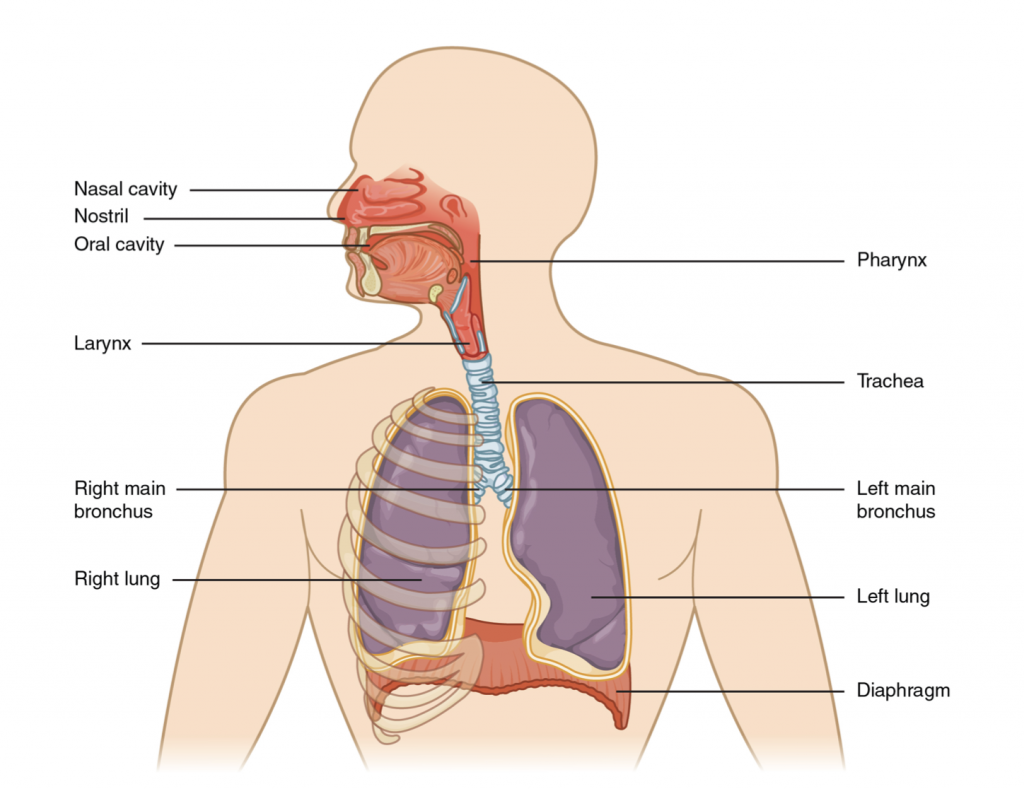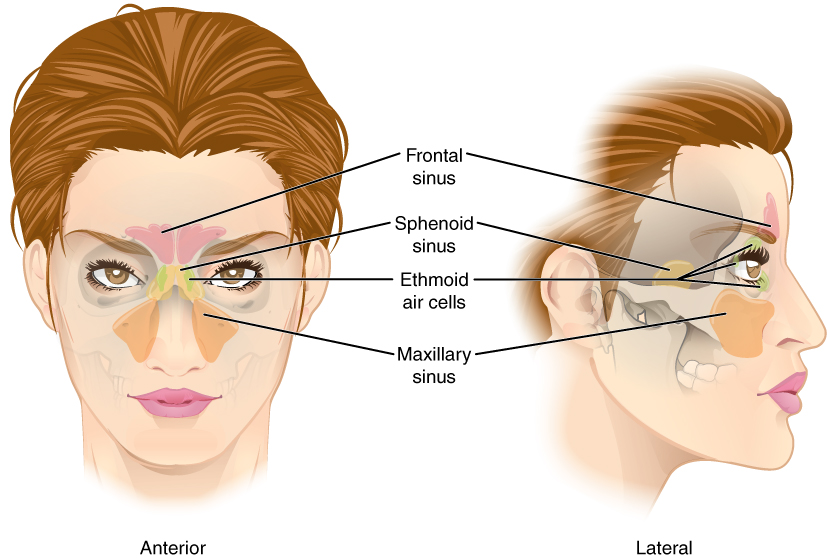9.2 Introduction to the Respiratory System
The respiratory system is important to assess because it is responsible for gas exchange, specifically facilitating oxygenation and ridding the body of carbon dioxide. If this system is not functioning properly, hypoxemia, hypoxia, and hypercapnia can occur. These pathophysiological processes can affect all body systems. As a nurse, your assessment of the respiratory system provides information about the functioning of this system and potential cues that require your action.
Respiratory System Components
The main components of the respiratory system include the upper and lower respiratory tract (see Figure 9.1).
The upper respiratory tract includes:
- The nasal cavity and paranasal sinuses.
- The pharynx and larynx.
The lower respiratory tract includes:
- The trachea, bronchi, and respiratory units.
- The lungs (three right lobes and two left lobes).
- The pleural membranes (visceral and parietal) and the pleural cavity.
- The pulmonary artery and pulmonary vein.
- The diaphragm.


You have already learned about the anatomy and physiology of the respiratory system: see Video 1 and Video 2 for a quick overview.
Video 1: Respiratory system physiology.
Video 2: How the lungs work.
Clinical Tip
The respiratory system is interconnected and influences many other body systems, so it is rarely assessed in isolation. When attempting to make sense of concerning respiratory cues, nurses commonly assess other body systems: cardiovascular, skin, and musculoskeletal.

